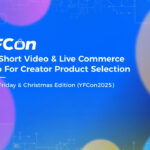
Consumers are exposed to countless brand messages every day. But when it’s time to make a choice—standing in front of a shelf or browsing through an app—only a handful of brands actually come to mind. That’s the moment when all the noise fades and the real competition begins.
For a long time, marketers treated brand awareness as the ultimate edge. Yet studies make it clear: simply knowing a brand exists doesn’t mean it will be top of mind when people make decisions. That’s where brand salience comes in. Salience measures the likelihood your brand will be noticed or remembered in real buying situations. It’s about mental availability—being present in the customer’s mind across different moments and contexts.
Awareness still matters, but without salience it often fails to turn into action. This article builds on the influential work of Jenni Romaniuk and Byron Sharp in Conceptualizing and Measuring Brand Salience (2004), and adds practical takeaways for today’s marketers.
Brand Salience vs. Brand Awareness
Brand salience, as Romaniuk and Sharp (2004) define it, “is the propensity of the brand to be noticed or thought of in buying situations.” (p.334). Whereas brand awareness is the general ability of consumers to recognize or recall a brand as belonging to a category. Awareness is foundational, but it is broad and often static – especially for established brands. People can be aware of dozens of brands they never consider buying. Instead, they respond to many different cues – functional needs, occasions, moods, environments – and your brand’s salience depends on how well it is mentally linked to those cues.
Brand salience is comprised of the quantity of memory structures a brand is linked to and the actual quality of these structures.
Let’s consider McDonald’s as an example. Below is the table with four kinds of cues: functional, situational, emotional, and sensory and concrete triggers that make people think of McDonald’s, and explains why each cue type strengthens brand salience (the chance the brand will come into mind at the moment of choice).
| Cue Type | Example cues that can trigger McDonald’s | Why it works for salience |
| Functional | “I need it fast”, “Drive-thru”, “Breakfast now”, “Coffee on commute”, “Kid’s meal” | Links to predictable solutions; low cognitive effort |
| Situational | Late-night drive, road trip exit sign, 10-minute lunch gap, rain/cold weather | Frequent, repeatable occasions with urgency |
| Emotional | Reward after a long day, weekend treat, family time, nostalgia | Converts mood into a brand cue |
| Sensory | Fries aroma, arches silhouette, red/yellow field of color, the jingle | Pre-attentive triggers that work in seconds |
McDonald’s has created a significant number of ways to ensure that people not only remember their products but also buy them. Functional cues connect the brand to predictable needs and easy solutions. Situational cues tie it to recurring contexts where urgency drives choice. Emotional cues link it to moods, rituals, and personal associations. Sensory cues act instantly, using sight, sound, smell, or color to prompt brand recall without conscious thought. Together, they ensure the brand is remembered when it is time to make a decision.
Measuring Brand Salience
There are several approaches to measuring brand salience. In The Smart Branding Book: How to Build a Profitable and Resilient Brand (2023), Dan White outlines a practical process:
- Interview consumers – Speak with a diverse group to understand why they choose particular products in a category and how they make purchase decisions.
- Identify CEPs – Use the insights from these interviews to determine potential Category Entry Points (CEPs).
- Quantify through surveys – Ask a larger sample of consumers which CEPs they use most frequently.
- Link brands to CEPs – Determine which brands come to mind for each CEP.
- Visualize the results – Create a chart with CEPs on the x-axis and the number of brand mentions on the y-axis.
Beyond consumer interviews and surveys, other tools and metrics can complement the measurement of brand salience. Share of search, for example, shows how often a brand is searched for online relative to competitors. This can serve as a proxy for salience, especially in competitive markets where consumers actively seek information before making a purchase. Platforms like Google Trends and SEO analytics tools are useful for this purpose.
Similarly, social listening tools provide insights into how frequently and in what context a brand is mentioned across social media, online reviews, and organic conversations. These mentions reflect how well the brand remains top of mind in everyday discourse.
Steps to develop Brand Salience
When designing an attribute list to conceptualise and measure brand salience, it is important to include a broad, varied set of cues to capture both quantity and quality of the brand’s memory network
- Increase Cue Coverage. First it is important to identify underrepresented situations or needs and connect your brand to them. For example, a sports drink brand linking itself not only to workouts, but also to study sessions and late-night work shifts.
- Stay Consistent. Next, it is important to maintain consistent brand assets (logos, colors, taglines) and re-expose audiences to existing associations to keep them “fresh” in memory. Every time you remind them of your brand, you strengthen the neural connection and make it faster for them to recall it.
- Use Distinctive Brand Assets. Shapes, sounds, mascots, or taglines that work as retrieval cues on their own. For example, McDonald’s jingle instantly cues the brand without words. Show customers what makes you unique. What drives your company?
- Be Present in Relevant Moments. Align media placement with situational cues. For instance, navigation & maps (app pins, sponsored routes, exit-ramp OOH) aligned to road-trip/commute moments-reaches people in motion at decision points (exits, intersections, fuel stops). This is classic situational salience.
- Leverage Multi-Cue Messaging. Combining functional and emotional cues in a single creative makes your brand more memorable and versatile across buying situations. Functional cues (e.g., “hydrates fast,” “lasts longer,” “easy on-the-go”) remind consumers of the practical reasons to choose your product. Emotional cues (e.g., joy, confidence, nostalgia, belonging) tap into how consumers want to feel when using your brand. When both are used together, you create multiple “entry points” into memory.
Common Mistakes and How to Avoid Them
- Measuring only top-of-mind: TOM is one cue. It is recommended to add multiple CEPs to reflect real buying.
- Confusing attitude with availability: Liking a brand doesn’t guarantee recall at the shelf. Tracking both and managing them differently is important.
- Overloading single ads: Two or three cues per execution are optimal. More cues will only add noise.
- Inconsistent assets: Frequent logo/color/tagline changes are not recommended as they will reset your mental equity.
- No competitive frame: Salience is relative. It is crucial to benchmark vs. competitors on the same cues.
Conclusion
Brand salience is the practical, measurable expression of mental availability: the likelihood that your brand is noticed or comes to mind in the moments when buying happens. It is broader than awareness and deeper than top‑of‑mind because it is built from many cues, not one label, and serves as a predictor of behavior because it operates before evaluation – by deciding whether a specific brand is in the mental frame to be chosen.







